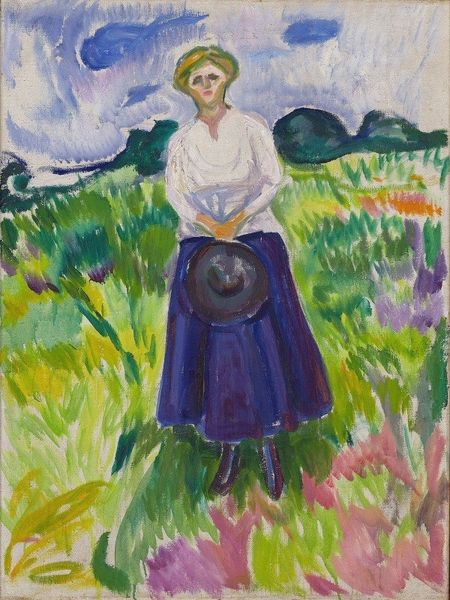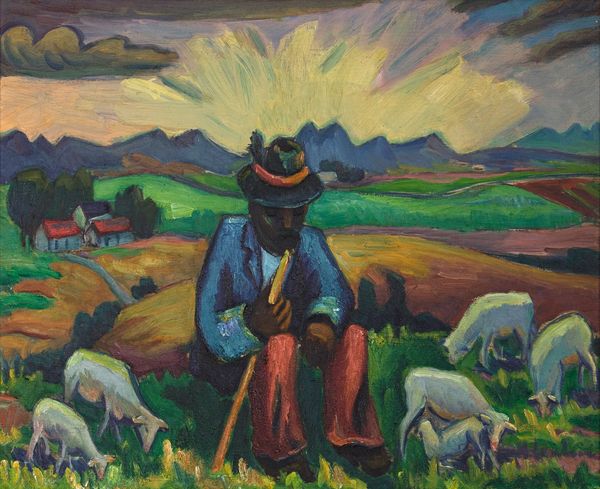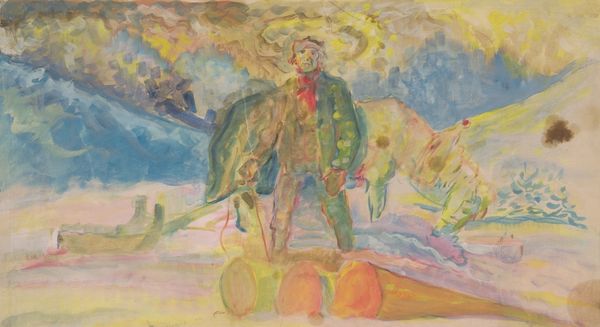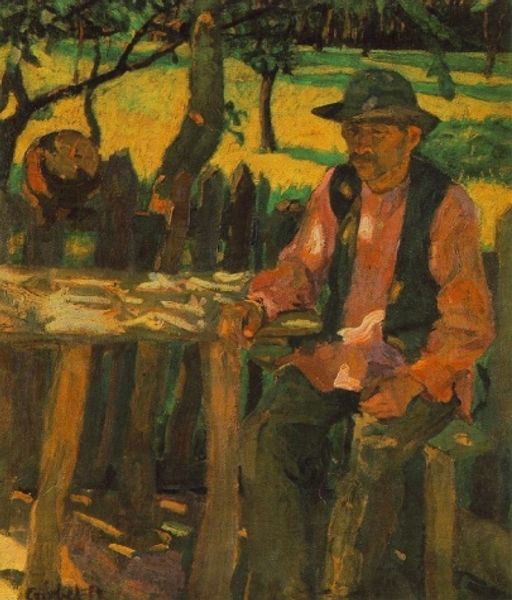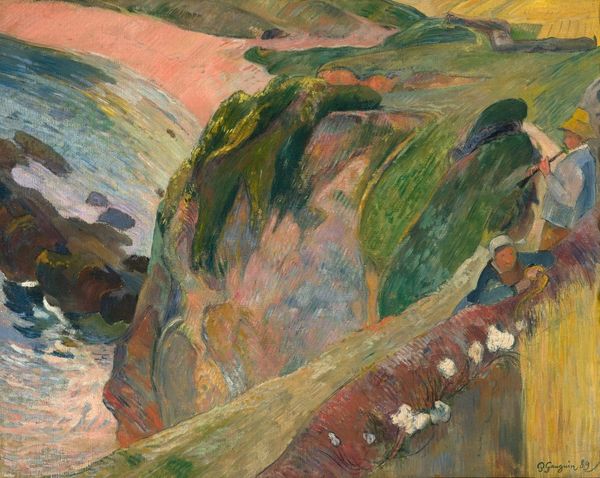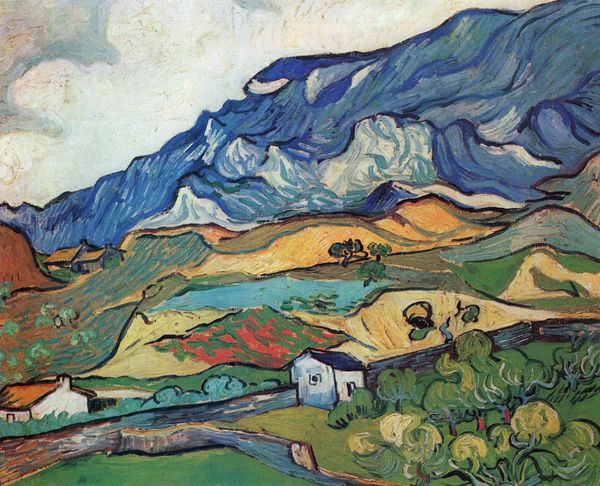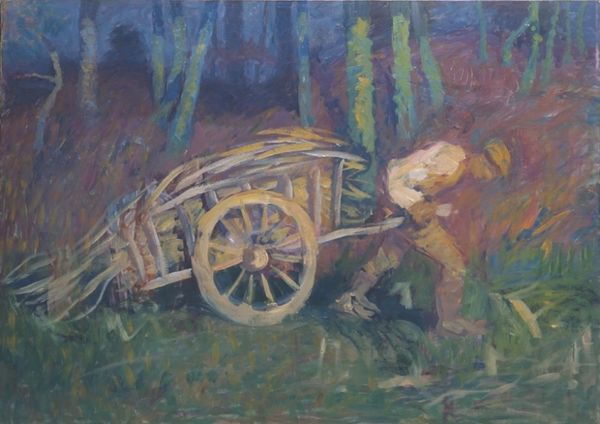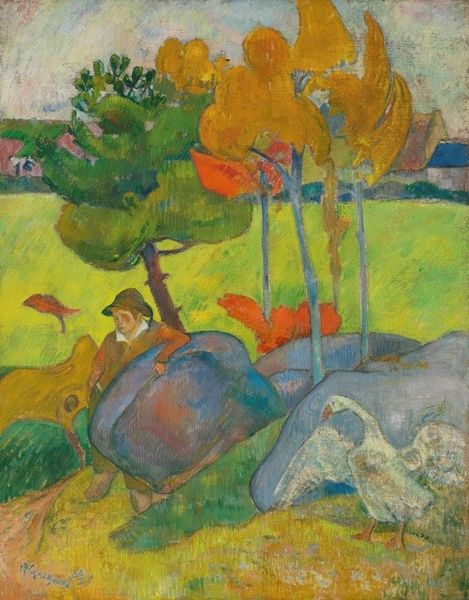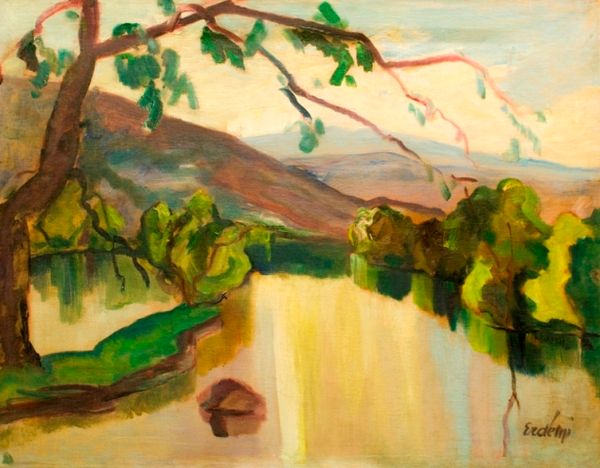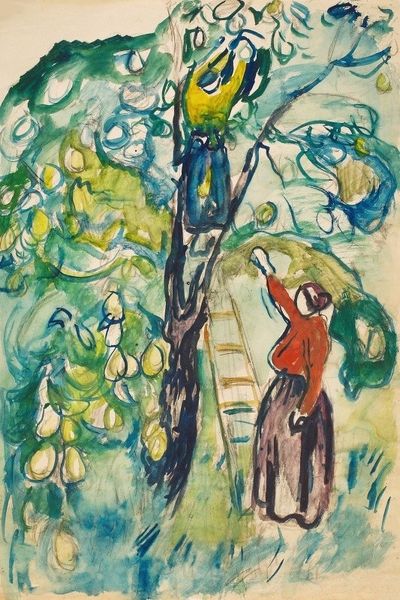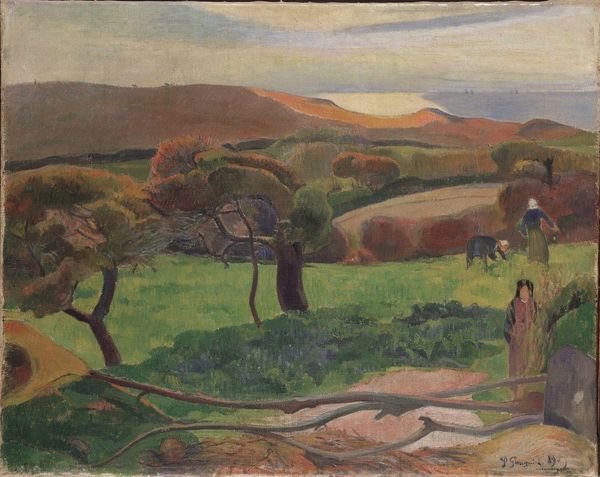
Copyright: Public Domain: Artvee
Edvard Munch's "Man in the Cabbage Field" presents a figure almost swallowed by the fecundity of the earth, laden with produce. The cabbage, in its dense, leafy form, transcends mere nourishment; it is an ancient symbol of abundance and sustenance. Consider the cyclical nature inherent here: the sowing, growth, harvest, and inevitable return to the soil. We find echoes of Demeter, the Greek goddess of agriculture, whose grief mirrored the barren winter, only to be resurrected with the spring's first shoots. The stooped posture of the farmer, burdened yet resolute, recalls the myth of Atlas, bearing the weight of the world. This act of bearing fruit, this cyclical return, speaks to our deepest fears of mortality and the subconscious desire for renewal. The artist taps into this collective memory. The painting’s emotional power lies in the recognition of our shared human experience, evoking profound, subconscious associations. The motif of abundance and burden, eternally resurfacing, continuously evolves to mirror the changing anxieties and hopes of each generation.
Comments
No comments
Be the first to comment and join the conversation on the ultimate creative platform.

